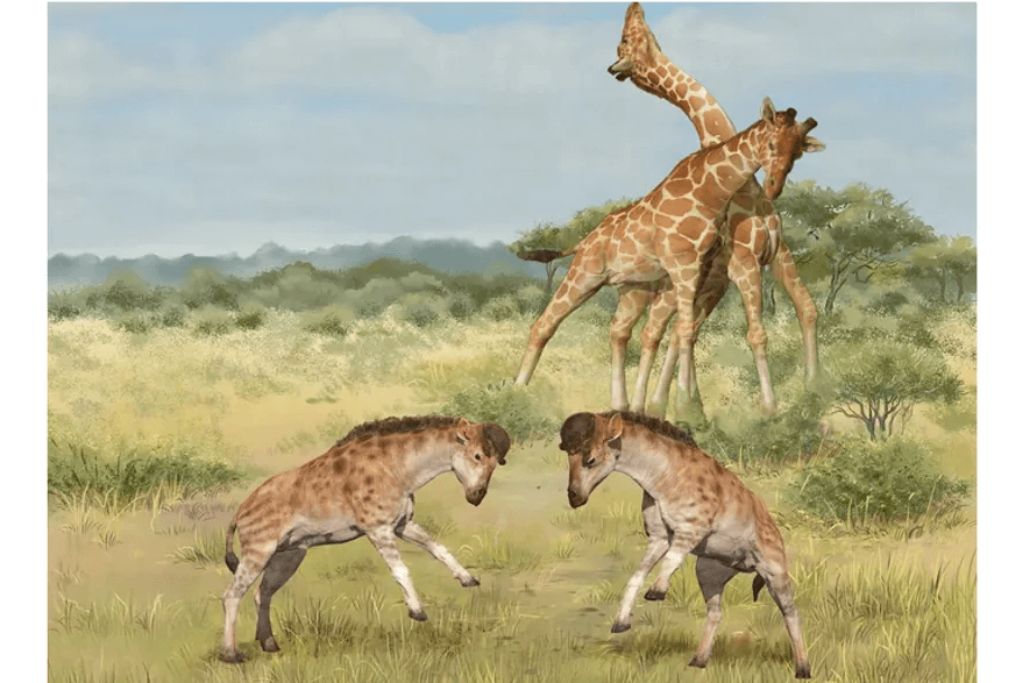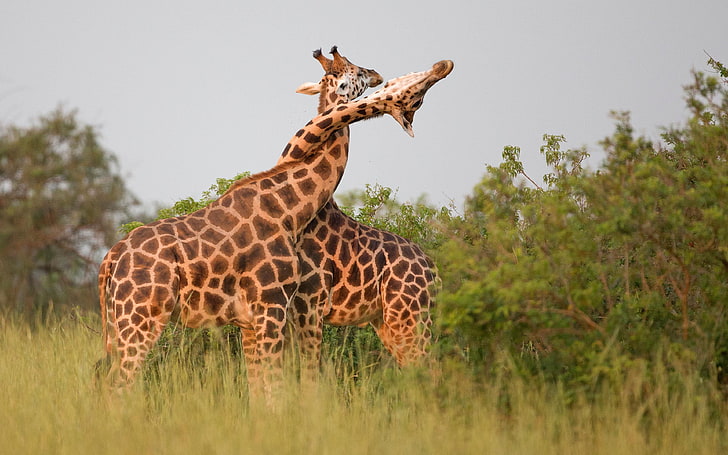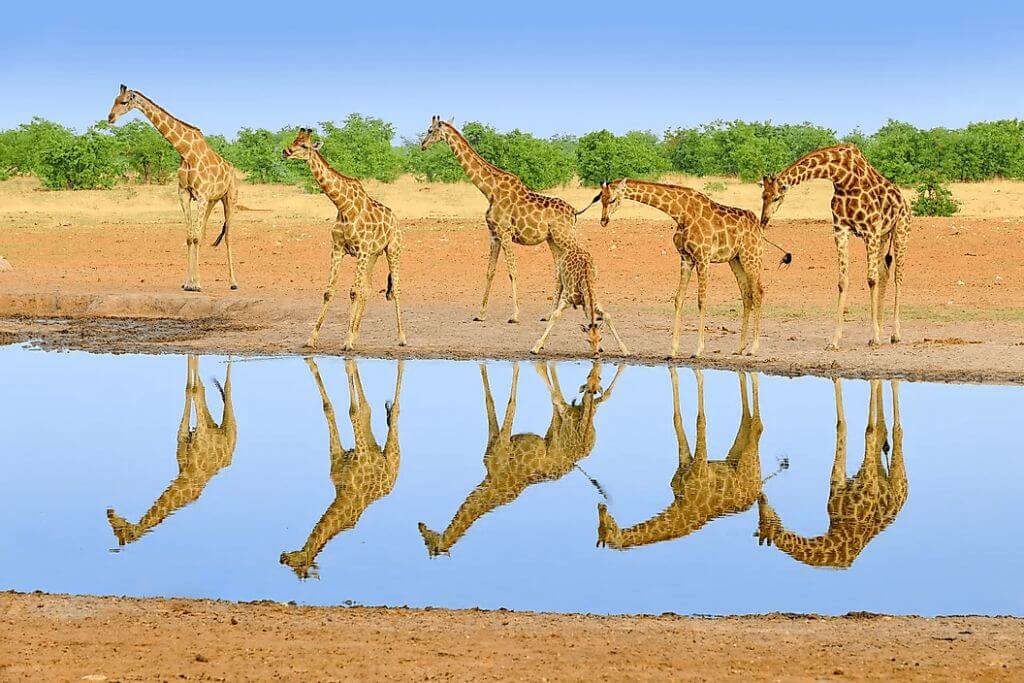It’s widely assumed that the giraffe evolved its six-foot-long neck to reach leaves on the highest branches. According to a new study by Chinese researchers, the Giraffes’ distinctive neck evolved over millions of years as an effective weapon.
Researchers reached this conclusion after studying fossils from Discokeryx xiezhi, a strange early giraffoid species that roamed the Xinjiang region of northwest China 17 million years ago. According to the findings, giraffes evolved long necks to hit other males in the fight for a female because a longer neck allowed them to generate more power and speed.

D. xiezhi, unlike modern giraffes, had only one ossicone (the skin-covered bone structure at the top of the head), but it was shaped more like a dome or a disc. D. xiezhi gets its name from its single ossicone, which resembles the xiezhi, a one-horned creature from ancient Chinese mythology.
The new study was led by researchers from the Chinese Academy of Sciences’ Institute of Vertebrate Paleontology and Paleoanthropology (IVPP) in Beijing.
‘Both living giraffes and Discokeryx xiezhi are members of the Giraffoidea superfamily,’ said IVPP study author Wang Shiqi.
‘Despite their vastly different skull and neck morphologies, both are associated with male courtship struggles and have evolved in an extreme direction.’
A giraffe’s neck can now be six feet long – taller than the average man – and weigh up to 600 pounds. The giraffe had a stumpier neck millions of years ago, but competition for food drove the steady increase in neck length over many generations as their weapons.
According to Charles Darwin’s theory of natural selection, longer necks allowed giraffes to browse for edible treetop leaves in the African Savannah woodlands that would otherwise be out of reach.
According to the theory, giraffes with the longest necks were able to access the necessary food and pass on their genetic code to subsequent generations.
Read more Meet Rare White Lion With Gorgeous Hair In South Africa
However, as scientists observed more giraffe behavior, they realized that the neck serves as a weapon in the male courtship competition. This is evident in today’s viral videos of two males brutally whacking each other. Longer necks generate more speed and power, so the longer the neck, the more damage the opponent takes.
In fact, male giraffe neck size is directly related to social hierarchy, with courtship competition driving the evolution of long necks. The fossils in this study were discovered in early Miocene’strata’ (rock or sediment layers) from around 17 million years ago on the northern margin of the Junggar Basin in Xinjiang.
The discovery included a complete skull and four cervical vertebrae from Discokeryx xiezhi. According to the analysis, the ancient species wore helmet-like headgear that was more like a dome than a sharp point, and they had particularly complex head and neck joints. Researchers discovered that the species’ complicated articulations between the skull and cervical vertebrae were specially adapted to high-speed head-to-head impact.

This structure was far more effective than that of living animals that are well adapted to head impact, such as the musk ox. According to researchers, D. xiezhi may have been the vertebrate best adapted to head impact ever. The ability to whack an opponent with their necks, and the associated survival benefits as a weapon, appear to have been an important part of giraffe morphology for millions of years.
The researchers also compared the horn morphology of various ruminant groups, such as giraffoids, cattle, sheep, deer, and pronghorn. They discovered that giraffe horn diversity is much higher than in other groups, with a tendency toward extreme differences in morphology. This suggests that courtship struggles in giraffes are more intense and diverse than in other ruminants.
The findings also indicate that D. xiezhi lived in dry open grasslands and may have migrated seasonally. The grassland environment was more barren and less comfortable for animals at the time than the forest environment. In fact, the species’ violent fighting may have been caused by environmental survival stress.
The new research was published in the journal Science.
Do you know Why Are African Elephants Endangered Now?
